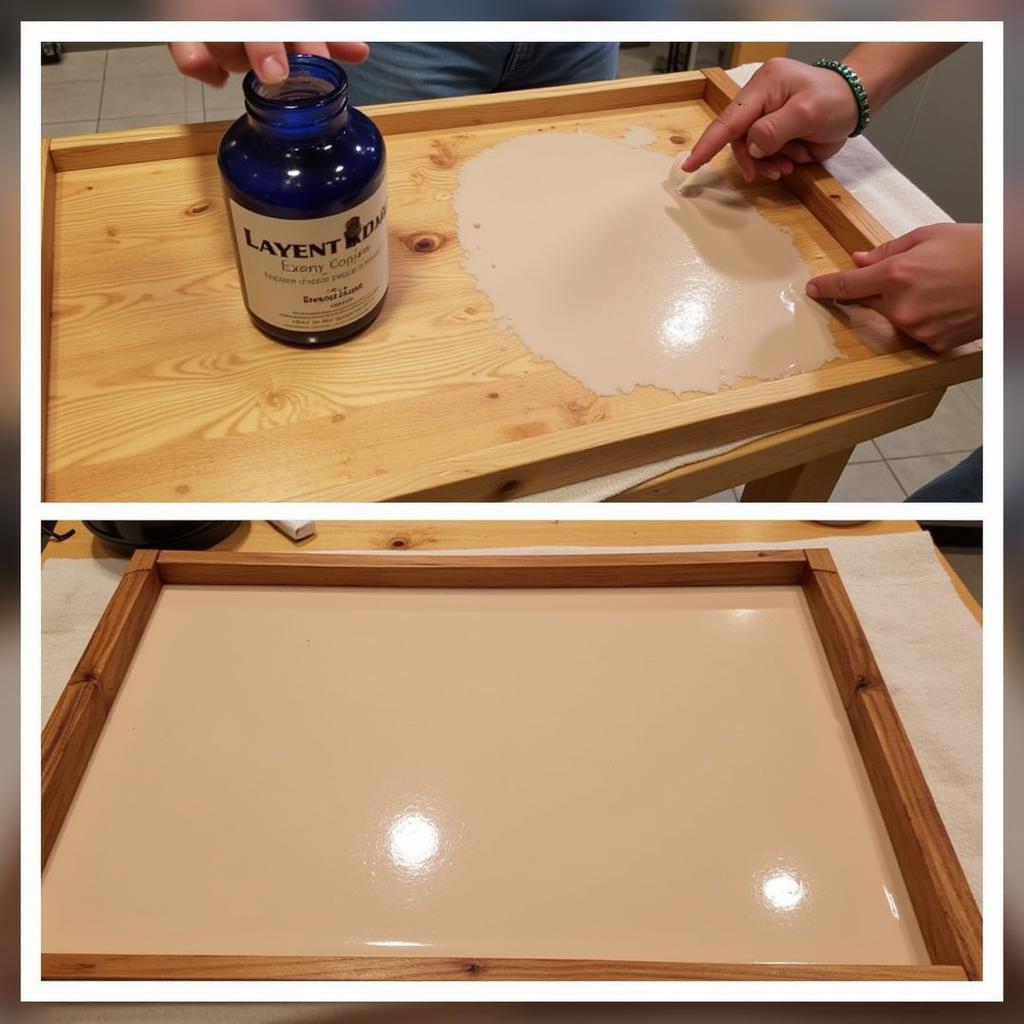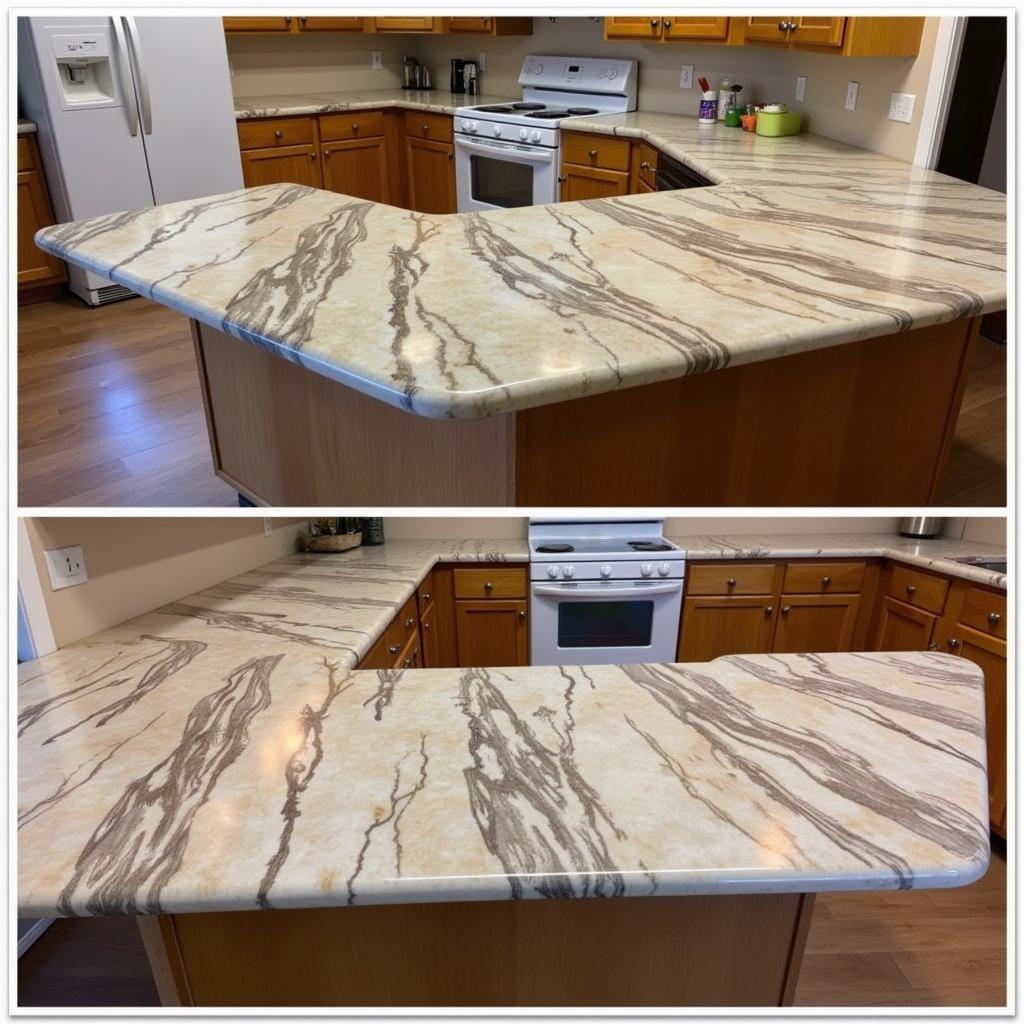Food Safe Plastic Epoxy is a topic that generates a lot of interest, especially among DIY enthusiasts and crafters. Knowing which epoxy resins are truly safe for food contact is crucial for ensuring the health and well-being of those who use the finished products. This guide will delve into the intricacies of food safe plastic epoxy, exploring its properties, applications, and safety considerations.
Choosing the right epoxy for projects involving food can be tricky. Not all epoxies are created equal, and some contain harmful chemicals that can leach into food. Understanding the difference between regular epoxy and food safe plastic epoxy is essential for making informed decisions. Looking for a reliable food safe sealant for glass? Check out our resources on this important topic.
Understanding Food Safe Plastic Epoxy
What exactly does “food safe” mean when it comes to epoxy? A food safe epoxy resin is formulated to be inert and non-toxic once fully cured. This means that it won’t leach chemicals into food even under conditions of heat or prolonged contact. However, it’s important to note that even food safe epoxy should not be used in applications where it will be subjected to continuous high heat, such as on stovetops or in ovens.
One key factor to consider is FDA compliance. While the term “FDA approved” is often used, it’s more accurate to say that the components of a food safe epoxy comply with FDA regulations for indirect food contact. This means that the cured epoxy is safe for surfaces that may come into contact with food, such as cutting boards, countertops, and serving trays.
Choosing the Right Food Safe Plastic Epoxy
With so many epoxy products on the market, selecting the right one can feel overwhelming. Here are some key factors to consider:
- Certification: Look for certifications that indicate compliance with food safety standards.
- Clarity: Many food safe epoxies offer excellent clarity, making them ideal for decorative applications.
- Durability: Choose an epoxy that is resistant to scratches, stains, and yellowing.
- UV Resistance: If your project will be exposed to sunlight, opt for a UV-resistant formula.
Are you curious about which epoxies are truly food safe? Explore our detailed guide on epoxy food safe options.
Applying Food Safe Plastic Epoxy
Proper application is crucial for achieving a safe and durable finish. Here’s a step-by-step guide:
- Preparation: Thoroughly clean and dry the surface before applying the epoxy.
- Mixing: Follow the manufacturer’s instructions carefully for mixing the resin and hardener.
- Application: Apply a thin, even coat of epoxy to the surface.
- Curing: Allow the epoxy to cure completely according to the manufacturer’s instructions.
 Applying Food Safe Epoxy to a Serving Tray
Applying Food Safe Epoxy to a Serving Tray
Safety Precautions
While food safe epoxy is considered safe for indirect food contact, it’s important to take some precautions:
- Ventilation: Work in a well-ventilated area to avoid inhaling fumes.
- Gloves: Wear gloves to protect your skin from contact with the epoxy.
- Eye Protection: Wear eye protection to prevent splashes from getting into your eyes.
“Ensuring your epoxy projects are truly food safe requires careful selection and proper application,” says Dr. Amelia Carter, a materials scientist specializing in polymer chemistry. “Always follow manufacturer instructions and prioritize safety throughout the process.”
Conclusion
Food safe plastic epoxy offers a versatile and durable solution for a variety of projects. By understanding the properties, applications, and safety considerations, you can create beautiful and functional pieces that are safe for food contact. Remember to choose a certified product, follow application instructions carefully, and prioritize safety throughout the process. Food safe plastic epoxy can enhance your creative projects while maintaining the highest standards of safety.
 Finished Food Safe Epoxy Project on a Countertop
Finished Food Safe Epoxy Project on a Countertop
“Properly cured food-safe epoxy offers a durable and hygienic surface ideal for various applications,” adds Dr. David Miller, a food safety consultant. “Its resistance to stains and bacteria makes it a practical choice for food contact areas.”
FAQ
- What is food safe epoxy?
- Is all epoxy food safe?
- How do I apply food safe epoxy?
- What safety precautions should I take when using food safe epoxy?
- Where can I buy food safe epoxy?
- What are the common uses of food safe epoxy?
- How do I clean surfaces coated with food safe epoxy?
For more information about food safe sealants for glass, visit our dedicated page. You might also find our guide on epoxy food safe options helpful.
Need assistance? Contact us at Phone Number: 02437655121, Email: minacones@gmail.com or visit us at 3PGH+8R9, ĐT70A, thôn Trung, Bắc Từ Liêm, Hà Nội, Việt Nam. We have a 24/7 customer service team.